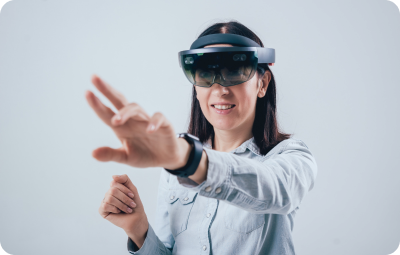The Future of Home Theaters:
Exploring Augmented Reality Experiences





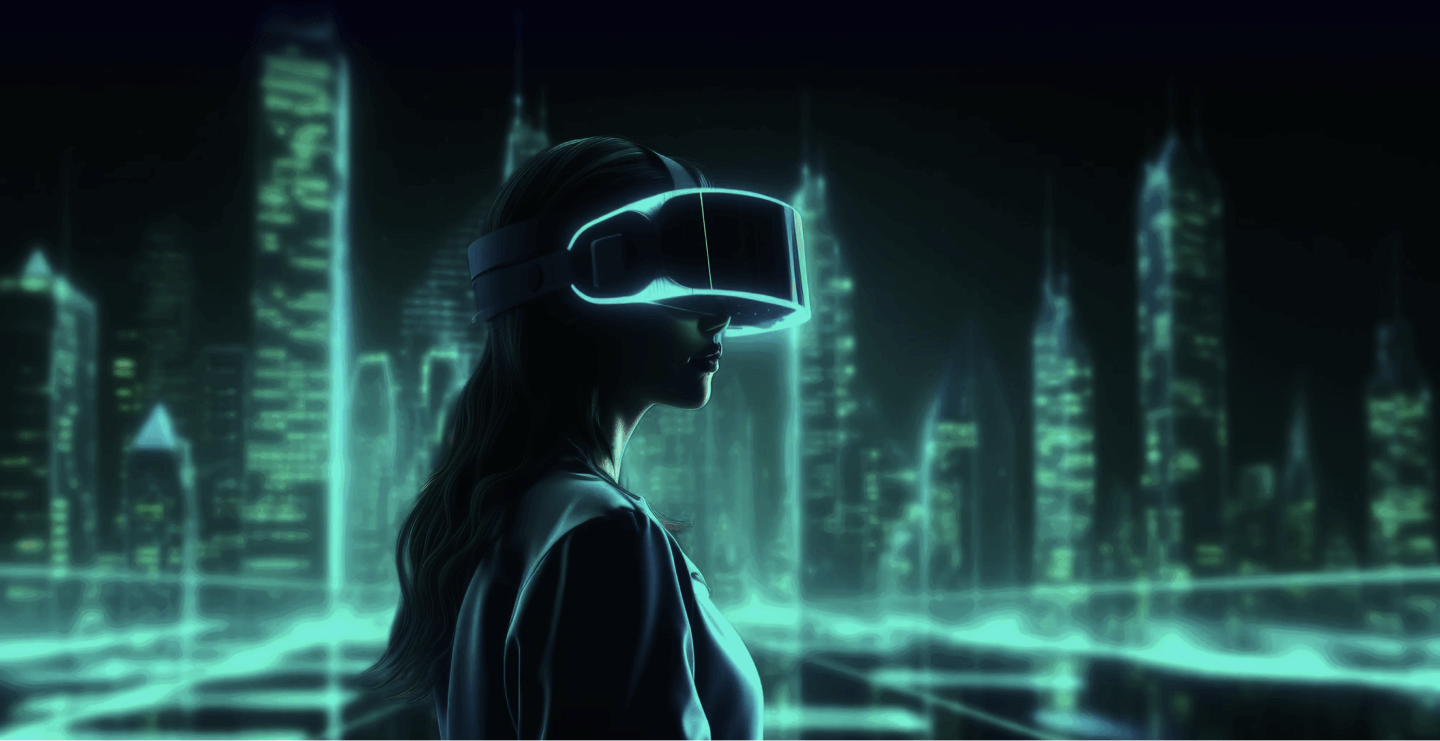
Augmented reality is a subsection of a larger concept of extended reality (XR) and has completely revolutionized how we interact with media. AR’s unique blend of real and virtual worlds enhances many practical and recreational experiences.
AR dates back to 1968 when Harvard scientist and professor Ivan Sutherland set an objective of optimizing the interaction between people and computers.
In 1963, he released his doctoral thesis on an innovative Sketchpad program that would blend human intelligence and movement with computer-generated action.
His research led to the invention of the first headset, The Sword of Damocles. This device encompassed the user’s full attention on 3D graphics that played on the senses. For this reason, AR and VR are commonly intertwined despite clear differences in the modern world. More on that later.


Sutherland’s invention had a major influence on the arts and entertainment during the 1980s and 1990s. For example, in 1998, people saw augmented graphics laid over a live NFL game, enhancing the viewing experience for people spectating at home.
This event was just the start of AR. Today, we use AR more than we realize, especially from the comfort of our homes. Read on as we answer “What is augmented reality?”, uncover AR’s impact on home entertainment as we know it, and reveal its potential in the future. We’ll highlight potential drawbacks and list steps to harness AR for the ultimate home theater experience.
The Basics of Augmented Reality
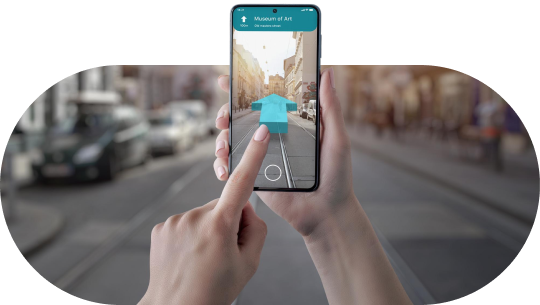
Augmented reality is an innovative technology that digitalizes the stimulation of visual, touch, and sound senses.
Computer-generated videos, images, ambient noises, and 3D models of real-world settings transport you to completely new locations–it could be as simple as a walking tour of New York’s most iconic streets and avenues, driving a high-speed supercar or visualizing furniture in your home.
On one hand, it’s a unique tool that enhances your perception of reality. A clothing retailer might use a screen to help customers try on-sale outfits without the hassle of getting unchanged. Meanwhile, autocenters depict a bicycle’s durability, speed, and agility along different terrains and weather, helping customers imagine their life with the product.
At its core, augmented reality catalyzes the entertainment revolution inside and outside the home. AR offers limitless potential, combining various mediums, including magazines, motion pictures, news, and music. More on this later in our exploration of AR.
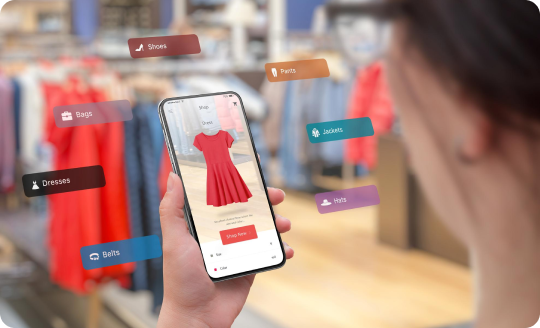
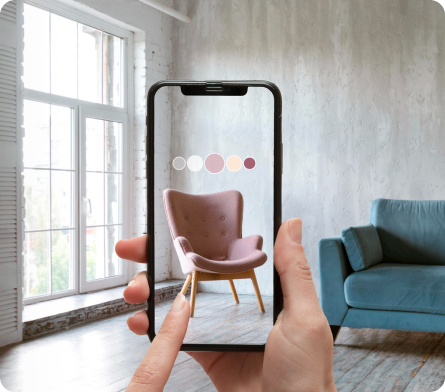
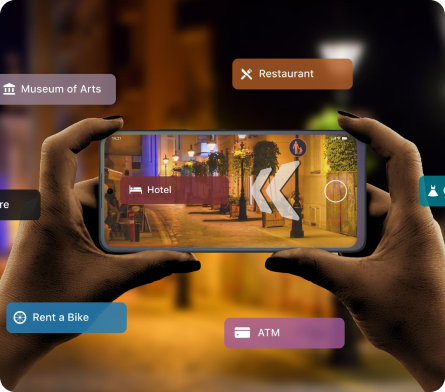
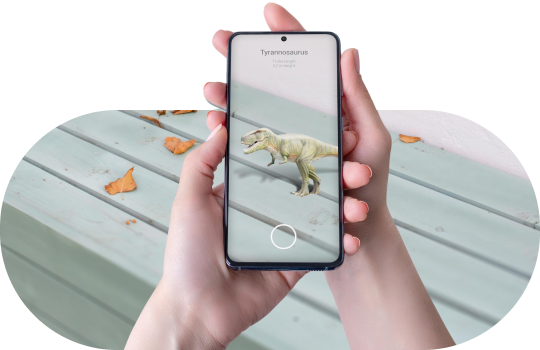
Differentiating AR from Virtual Reality (VR)
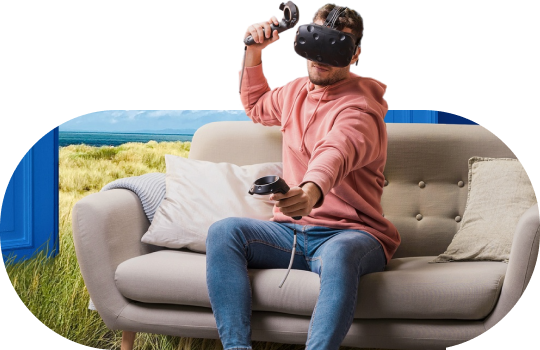
Now, here’s the trick–AR shouldn’t be mistaken for VR because they’re two separate technologies. Despite similarities, the two outlets offer different experiences and, sometimes, converse purposes.
It’s time to compare
augmented reality vs virtual reality.
Nature of Reality
Virtual reality (VR) transports you to a fictional land through graphic design and interactive data to create immersive experiences for recreational activities like playing video games.
AR is compatible with multiple devices, such as smartphones, tablets, glasses, digital screens, headsets, and, if we’re getting super futuristic, through contact lenses. It uses camera and speaker functionality to engage you in a more lifelike experience.

Here’s a comparison example
PlayStation’s VR game, Marvel’s IronMan lets you travel through space and explore non-playable characters’ futuristic sunset mansions.

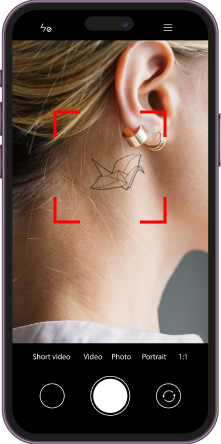
INKHUNTER’s AR app lets you place realistic tattoo designs on your body through your smartphone’s camera lens in real-time before taking the plunge and committing to the real thing.
Hardware
AR is compatible with multiple devices, such as smartphones, tablets, glasses, digital screens, headsets, and if we’re getting super futuristic, through contact lenses. It uses camera and speaker functionality to engage you in a more lifelike experience.
AR is compatible with multiple devices

Although VR uses a similar-looking headset that covers the eyes, this hardware uses advanced features to facilitate touch and movement, so you have an authentic experience somewhere completely fantastical.
Hand controls sometimes accompany headsets for accurate sensitivity to physical activity.
Interactivity
Compatibility with various touchscreen devices means AR works through touch and voice. The physical and digital worlds overlap, allowing you to customize the augmented reality they’re experiencing.
For example, placing and moving new furniture around a newly renovated living room works with touch and drag features.
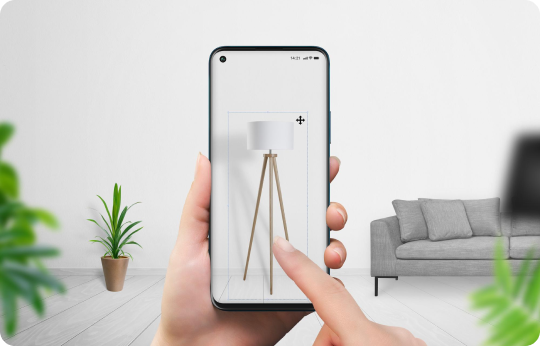
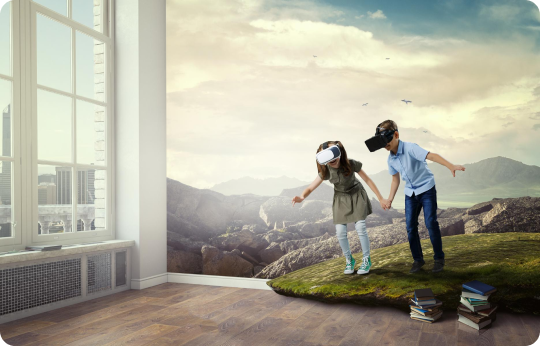
VR replicates your movements–a reach of the hand, a wobble in stance, VR is likely to catch it all. These features enable you to embody a genuine character. Upon meeting video game NPCs, you can physically reach out to select options like picking up an object or choosing a conversation reaction.
Certain motions defend you against villains or increase speed. Turning and tilting your head shows you different spaces, as in real life.

Applications
Downloadable AR smartphone games like Pokémon GO follow your whereabouts, helping you identify eggs around your local map. Other applications like Google Maps place direction arrows on the street’s view to improve navigation.
We commonly associate VR with immersive video games, but situational simulations are often available.
For instance, you can insert yourself in the place of a pilot or astronaut preparing for take-off or landing.
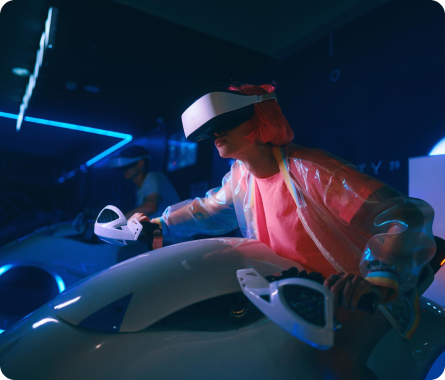
Immersion Level
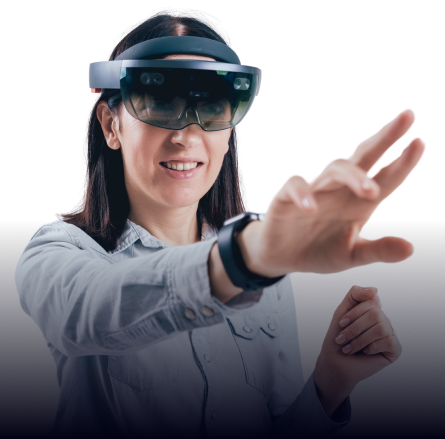
AR blends physical and digital reality to enhance your real-world surroundings and satisfy your needs. Whether evaluating a purchase or educating yourself on how an object works, it often strives to help you draw conclusions or solve problems (like how to get from destination A to location B).
Participating in a VR experience closes off your awareness of the real world to maximize engagement with the functional one you’ve entered. You may still hear external sounds, but the headset’s design is to immerse you deeply in a game or simulation.
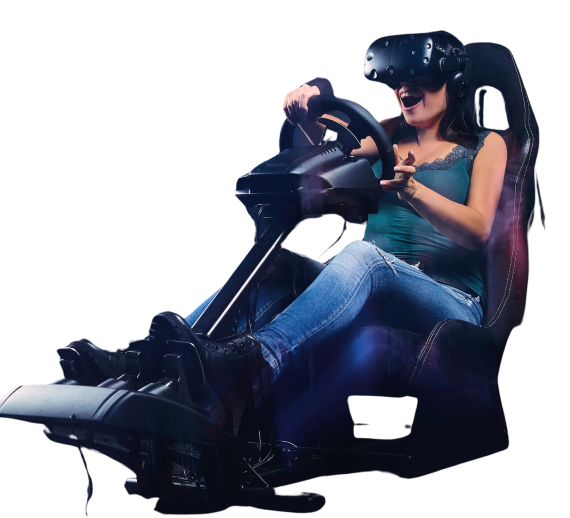
Development and Accessibility
Whether you noticed it or not, AR is engrained in many of the applications we use with second nature, including Google Maps and Instagram’s filters–see how both of these are also free to use.
Development tools like ARKit by Apple and ARCore by Google enable developers to create AR-functional smartphone apps.
In fact, by 2024, Statista researchers predict that there will be 1.7 billion cell users with AR worldwide. That’s a 1.5 billion rise since 2015’s figures of 200 million cell phones.

While price doesn’t affect the accessibility of some AR mediums (like free apps or filters), it’s certainly a limiting factor for VR. Interacting with VR at home relies on ownership of a modern console, such as a PlayStation or a PC. Even then, it’s an additional cost on top of those high-value items. You may agree that the higher price point is reasonable, considering the immersion VR brings over AR.

Current State of AR in Home Entertainment - 290
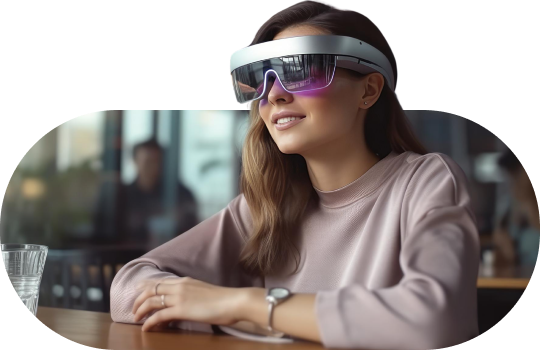
By now, the practicality of AR is apparent, but how does it transpire in the world of home entertainment? The evolution of smart houses certainly opens space for AR technology. As of 2023, researchers predict that 60.4 million households in the U.S. have smart devices, so it’s clear AR isn’t out of the ordinary at home.
Researchers Predict That
60.4 million
Households In The U.S.
Have Smart Devices
As of 2022, AR glasses generated a
In The Smart Glasses And Headset Display Sector.
Let’s find out why this technology is so popular:
Microsoft HoloLens
The HoloLens is a multifaceted device popular in the manufacturing, healthcare, business, and education sectors, with industry giants such as Audi, L’Oreal, and AirBus using it. Professionals use it to visualize designs, evaluate diagrams, and display patient data.
You can enjoy HoloLens’ groundbreaking features at home, too. The HoloLens 2, in particular, facilitates face-to-face digital meets, gameplay or AR games, graffiti drawing, and computerized model creation. Paleontology enthusiasts can even immerse themselves in prehistoric landscapes.
You’re probably thinking this sounds a lot like a VR headset. Unlike these devices, the HoloLens has a transparent lens that layers computer-generated graphics and motion pictures over your existing reality, whereas VR is completely digital.
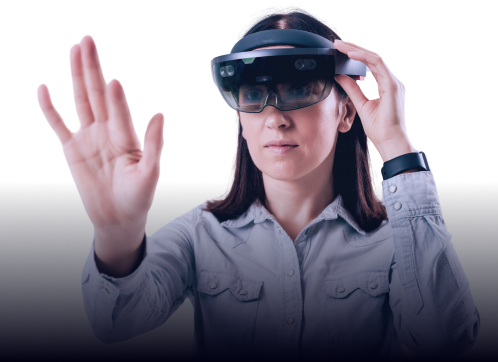
Magic Leap
Magic Leap is another complex tool with endless enterprise solutions for collaboration and technical tasks. These AR glasses function similarly to the HoloLens. However, it invites you to explore its application store containing Spotify, NBA, and CNN for free. Let’s hone on Spotify–you can display, play, and organize your most loved tracks around the room you’re sitting in.
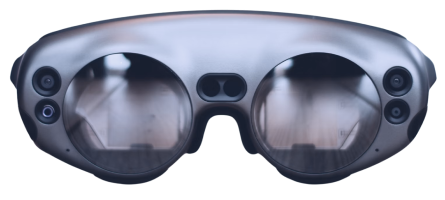
Action and adventure games like Seedling let you grow and nurture galactic plants for holistic medicine. Alternatively, opt for a deep immersive experience underwater, walking with elephants, or visiting outer space. It alternates reality by laying graphics over your sight and facilitates natural facial movements so that everywhere you look depicts your chosen setting.

How AR Enhances Multimedia Experiences
Augmented reality glasses are undoubtedly the future of AR technology at-home entertainment, but what other creative outlets can we explore? Xreal Air AR Glasses and Rokid Air AR Glasses enable you to fill your space with motion pictures streamed from movies and gameplay.
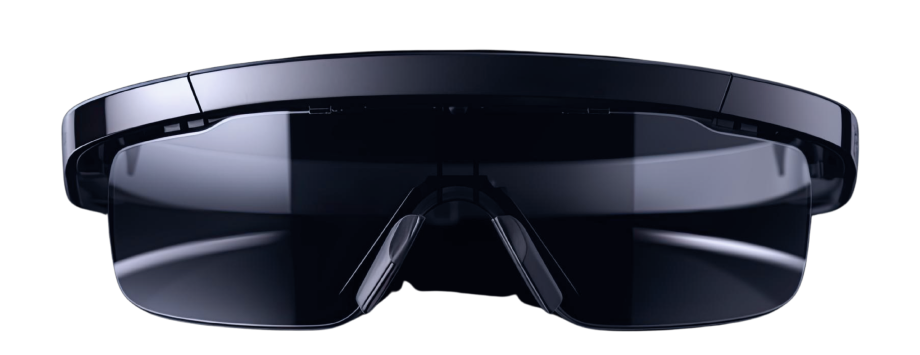
Check out some augmented reality examples below:
Interactive Movies
3D cinema brought the action closer to viewers’ eyes, fostering a deeper connection between motion pictures and the audience’s senses.
Subtle details like snow or explosion debris would create the illusion of reaching viewers’ bodies for enhanced immersion. Intricate details in James Cameron’s Avatar were a cornerstone to this technological movement, inspiring a shift in home entertainment.

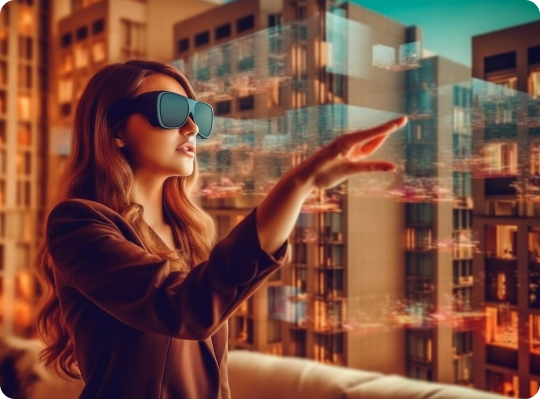
In the early 2010s, electronic manufacturers like Sony launched 3D TVs to evoke similar engrossment at home. However, smaller-scale televisions and rooms without a closed-off cinematic structure meant images didn’t translate well. Visuals sometimes seemed distorted for viewers positioned at an angle to the screen.
Beyond 3D, AR glasses help position people amid the action, with characters and settings surrounding the viewer. Black Mirror: Bandersnatch’s authentic approach to interactive film gave viewers the authority to decide the film’s direction through situational and behavioral choices. Decisions impacted the movie’s finale for next-level anticipation.
Although Bandersnatch didn’t incorporate AR, it certainly highlighted a trend that AR filmmakers could incorporate in future movies.
Live Concerts
Artists and event organizers can use screens, holograms, and dancers to create a unique live concert experience. Most notably, the ABBA Voyage event captivated ABBA’s most renowned tracks. Visuals encapsulate their iconic flared outfits from their 80s prime and replicate accurate mouth movements in time with their language.
GORILLAZ monumental experience in Times Square and Piccadilly Circus transferred the virtual band’s performance on large screens surrounding the landmarks. Viewers could see the performances via the cameras on their phones for an all-encompassing experience.
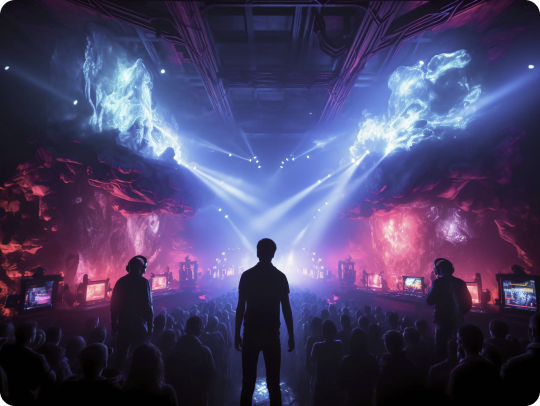
Sports Viewings
The sports industry’s inventive use of AR expands your perception of various games and races. Let’s take a soccer game, for example. During the lead-up, smartphone applications use camera features to display player positions, names, numbers, and statistics, maximizing anticipation.


AR translates into social media, with Snapchat and Instagram offering customizable or interactive filters surrounding you with world-class players or holding sought-after trophies.
The Tour de France creatively used augmented reality entertainment to let viewers experience the cycle route and observe a 360 map display via headset. Images display over the viewer’s real background, such as their lounge or home theater.

The Limitless Potential of AR in Home Theaters
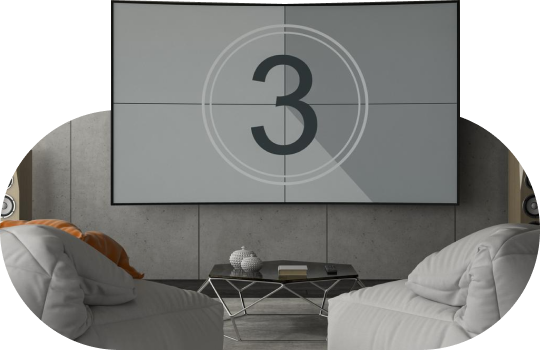
Augmented reality technologies have changed the trajectory of what makes a complete home theater. Incorporating AR incorporates the wonder of cinema and live experiences from the comfort of your home. Delve into how augmented reality will change entertainment in home theaters below:
Personalized Viewing Experience
AR avatar tools, such as Mywebar, empower you to create a 3D digital representation of yourself. You’ll have autonomy over your body shape, skin color, outfit expression, and hairstyle.
This tailored content aims to deliver a more personal experience, particularly when playing games or meeting others in the Metaverse. Avatars optimize natural cues like hand gestures and eye contact humans share during organic conversations.
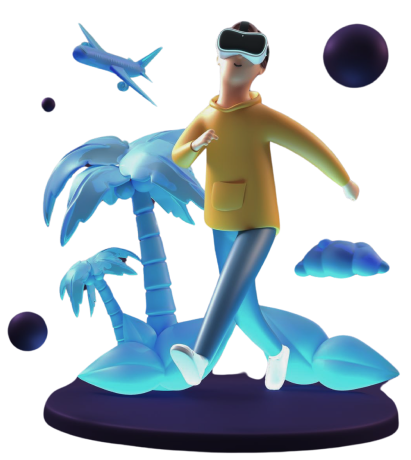
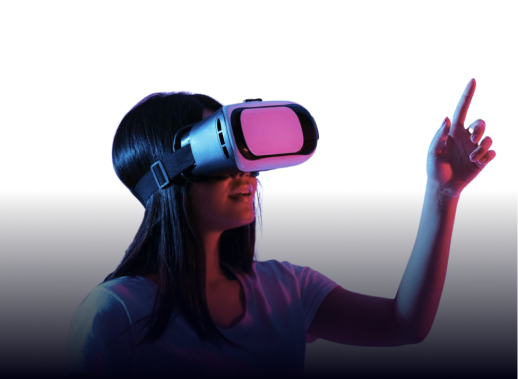
Audio adjustments provide further personalization. Adaptive soundscapes adjust in real-time, depending on your proximity to certain objects, people, scenes, or interactions with the content. You can also customize sound settings in alignment with what’s most comfortable for you.
Customizing AR functionalities gives your home office an advantage over real-world events and scenarios. Here, your personal preference is at the forefront of execution.

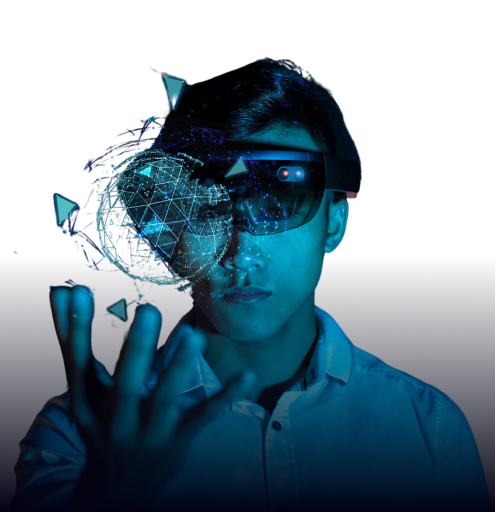
Enhanced Interactivity
Interactive movies, games, and other creative applications demolish the fourth wall, introducing a new level of storytelling. Interactive films and games impart control over the media’s procession on you.
For example, you’ll select a response depicting different tones, emotions, and objects during a gameplay conversation. This autonomy lets you express your personality in your digital persona.
Interactivity isn’t always recreational. Documentaries and sports share 3D facts, diagrams, stats, maps, and motion pictures, giving context to the subject. You can delve deeper into related facts and stories, enhancing your understanding of topics that interest you.
Imagine a car race. You can bring up a lifelike graphic of the car and remove layers to observe its interior and engine. Besides the imagery, additional features like written text or visual graphs on the materials used, core features, and functionality enhance perception.

Environment Integration
When we engage with movies and video games, we’re usually outside the box looking in. Augmented reality expands our original 2D perception of what’s happening by creating a somewhat omniscient view of the action.
Motion pictures and graphics fill the space before you, taking 3D visuals to the next level. Dynamic settings can change the color of walls, add artwork, or totally change what’s in front of you. Interactive objects may appear, such as clickable outlets of information or gameplay characters.


Let’s take the AR Dragon app, for example. As you open the app, AR features interpret your vision via the camera and introduce an interactive dragon sensitive to movement. Every day, you’ll feed and play with the dragon, watching it grow from infant to adult–it’s certainly a step up from the 90s favorite, Tamagotchi.
It’s an excellent way to make the same home theater feel like a new attraction whenever you engage with AR.
Social Enhancements
Now more than ever, we connect with loved ones worldwide via digital meetups and virtual conference software. Technology like Meta Horizon Home allows you to meet and share viewing experiences with friends and family.
It differs from classic communication apps like FaceTime and Google Meet because, although you don’t see your friend or relative’s real face, you interact with a genuine extension of them. It’s the closest replication of real-life meetups yet.
Casual meetups aside, shared viewing experiences support mutual connections formed while enjoying the same experience: watching sports games and movies or playing games.
Meanwhile, creatives can collaborate by sharing creations, like 3D character models. The Aero app for iOS and desktop generates a sharable link, allowing others to view and discuss your designs.

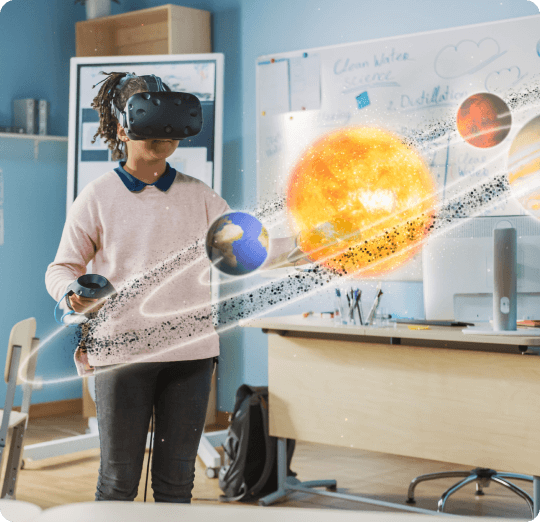
Edutainment Opportunities
Interactive diagrams and artifacts perfectly fuse entertainment and education–here we have edutainment. The HoloLens glasses, for example, can generate realistic holographic images that educational providers couldn’t otherwise share. This technology has also had an excellent knock-on effect in the home learning department.
Young learners can see the way things work. For instance, interactive holograms of the solar system allow children to “touch” the planets and observe their terrain.
Another graphic may show the creation of the Statue of Liberty. Here, motion pictures can display the structure from the inside out. Touch elements let young minds tilt and turn the statue to identify symbolic details, enhancing learning.
Enhanced Gaming
Gaming with AR glasses, particularly Xreal options, enhances cinematic features of games, such as graphics and depth of frame, blurring the lines of gameplay and movie watching. Deep immersion aids the feeling of active participation, particularly in first-person perspective games, such as a driving simulation. Here, you’ll see the wheel, speed stats, navigation, and supercar features as if you were in the real driver’s seat.
AR gaming is still a relatively new concept. One that’s most associated with VR. However, given the development and enterprise capabilities AR holds, the future looks bright for gamers.
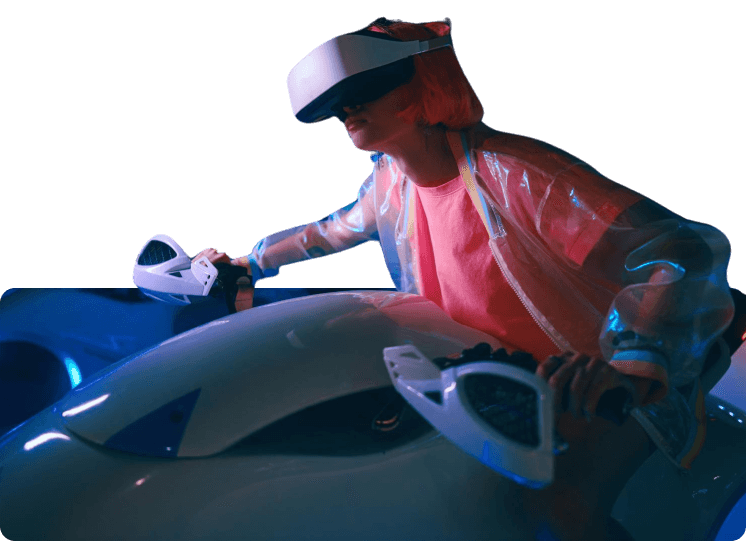
Immersive Concerts and Theatrical Experiences
U2’s 2018 eXPERIENCE show was a cornerstone of the AR immersive experience. Thousands of fans gathered around the double-sided 30-meter LED wall that would release volumetric images through a smartphone lens. Graphics included a 3D waterfall and a larger avatar.
Although still developing, AR has come a long way since then. You can now enjoy live concerts and theatrical experiences from the comfort of your home theater. In 2022, the electronic artist, Flume, live-streamed their Coachella performance, giving home viewers an incredible outer world experience: their iconic fluorescent waves and parrots emitting from the stage.
AR-powered live concerts viewed from home also encapsulate the infectious ambiance concert-goers love, including genuine crowd reactions and stage effects.
Multi-Sensory Experiences
AI triggers sight and sounds to create the illusion of being “inside” the screen, but where does that leave touch, taste, and smell?
4D multi-sensory experiences cater to every sense–moving seats, temperature changes, and subtle smells. AR hand control haptics may vibrate to mimic movements or interact with objects in games, but upcoming outlets seem to be stepping it up.
Reports show that engineers from Beihang University and the City University of Hong Kong are developing AR glasses emitting various odors to optimize the physical experience of playing games. According to the New York Post, smells include coffee, mojito, and pancakes.
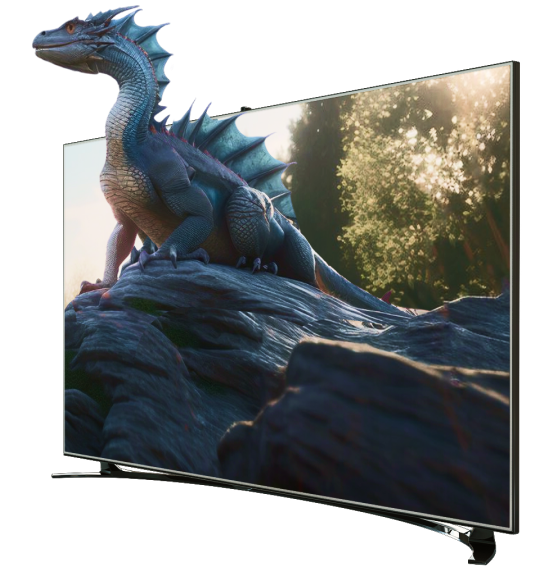
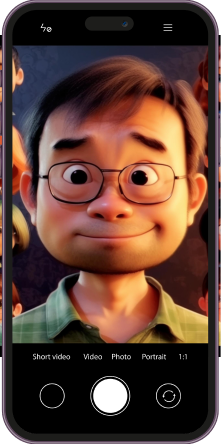
Content Creation for Viewers
User-generated content lets you feel part of creating an AR world surrounding your preferences and ideas. As a content creator, you can design your own filters for social media use–filters can manipulate facial features and color and incorporate movement. Some filters can include simple gameplay like tapping footballs to get them in the goal.
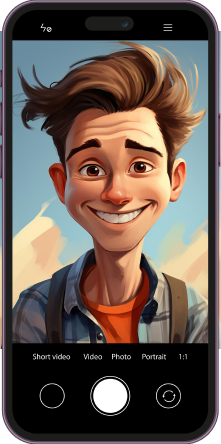
Integration with AI and Smart Homes
Spatial computing allows you to automate settings around your home to suit your preferences. For example, sensors linked to heating systems can identify when someone is in a room and automatically increase the temperature. Consider linking ambient lighting around your home theater to smartphone applications and televisions. Synching these technologies means lights react to motion and sound from your entertainment systems.
AR applications may allow you to introduce voice commands to select information outlets, move across pages, or speak with others.
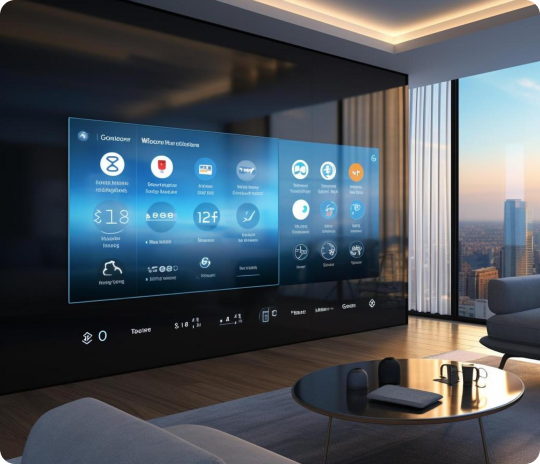
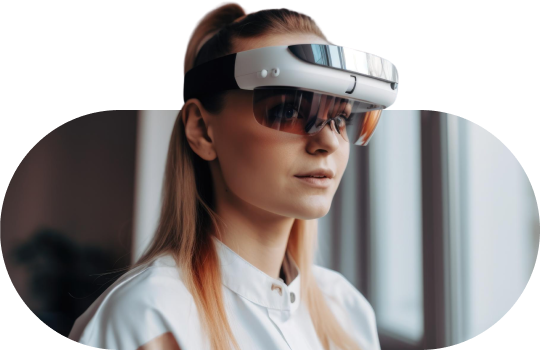
Challenges in Integrating AR with Home Theaters

AR has been around for less than 70 years, so we’re still learning about its true capabilities and its best uses at home. You may face several challenges when integrating it into your home theater, including the following.
High Costs
Retails often set high-spec AR technologies at unreachable prices, reducing accessibility to the average family home.
Microsoft HoloLens costs
$3,500
While Second-Generation Devices Cost $4,950.

Although these are often marketed as enterprise solutions, even more basic options cost an average of $300. You’ll also identify extra costs on enhancement equipment, like surround sound systems and ambient lighting.
Technological Limitations
AR uses vast power to generate high-quality experiences, which may limit battery life.

As it’s still a developing technology, software available on glasses for home entertainment is limited or may contain several glitches or bugs, affecting overall performance.
Physical Space Constraints
Some AR applications may require considerable room to display various components.
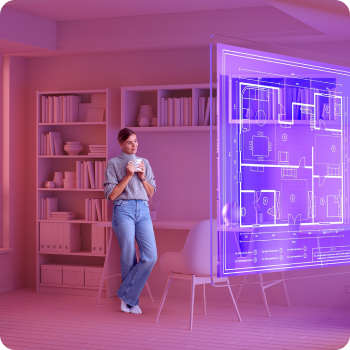
Making adaptations to your space isn’t always possible. Renting or inability to expand makes it challenging to make structural changes to your area, which may restrict your experience.
User Experience and Comfort
Wearing devices for too long can cause eyestrain, leading to headaches and fatigue. After some time, they may weigh heavy on your head, which becomes disruptive. Similarly, AR-powered smartphone applications prevent you from using other applications on your phone, such as messaging platforms and social media.
Learning Curve
Interactive viewing resents a huge shift from the spectatorship we’re used to. It may take some time to adjust to a new way of consuming content. Older individuals may feel alienated by the advanced tech, too.
Content Availability
Arguably, AR retracts from the unique experience of attending a live show or visiting the cinema, meaning people are apprehensive about trying it. Less demand means fewer apps are created, staggering the progress of AR’s development.
Safety Concerns
It’s so easy to get lost in the depth of an immersive experience that people perform actions they’re not accustomed to when at home. Dancing around the lounge like you’re among the crowd can feel liberating, but with obstructed vision, you could easily trip and injure yourself. Wearing powerful technology over your head could cause serious damage.
Privacy and Data Security
AR devices use cameras and sensors to interpret movements and proceed through applications. You may question whether this data is gathered and feel conscious about letting third parties connect with a camera viewing your home.
Aesthetic and Design Concerns
Current AR technology can look quite bulky, meaning it doesn’t fit in with sleek or decorative home theater aesthetics. You’ll find a limited color range, with most devices coming in black, grey, or white. They’re not malleable either, so you might identify storage issues, too.
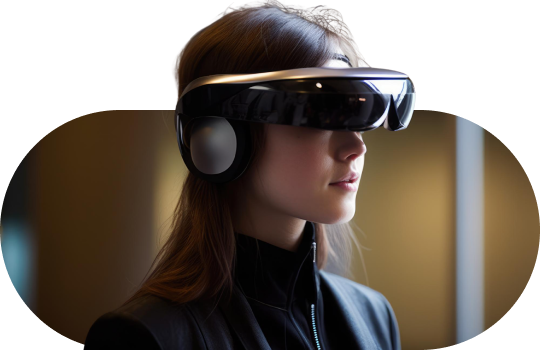
Preparing for an AR-Driven Home Theater Experience - 300

Review the nine considerations below when setting up your home theater:
Conclusion: Is AR the Future of Entertainment?
AR has been around for less than 70 years, so we’re still learning about its true capabilities and its best uses at home. You may face several challenges when integrating it into your home theater, including the following.
What Is Augmented Reality (AR)?
Augmented Reality (AR) enhances the user’s perception and interaction with the real world by overlaying virtual objects, information, or digital elements onto it. It creates an interactive and immersive experience by combining virtual and real-world elements. AR can be used with devices like smartphones, tablets, smart glasses, or headsets. It has various applications in entertainment, gaming, education, healthcare, retail, and more, providing users with a new way to interact with digital content in real-world environments.
What are the two main types of AR?
The two main types of AR are marker-based AR and markerless AR. Marker-based AR relies on specific markers, such as QR codes or fiducial markers, to anchor virtual content in the real world. Markerless AR, on the other hand, uses computer vision algorithms to detect and track objects or surfaces in the environment without the need for markers. Both types have their own advantages and applications depending on the specific use case.
What is the metaverse?
The metaverse refers to a virtual reality space where users can interact with a computer-generated environment and other people. It is often described as a collective virtual shared space that transcends physical boundaries. In the metaverse, users can explore and participate in various activities, such as socializing, gaming, learning, and even conducting business. The concept of the metaverse has gained significant attention in recent years, with the advancement of virtual reality technologies and the increasing popularity of immersive digital experiences.
What is the difference between AR & VR?
The main difference between Augmented Reality (AR) and Virtual Reality (VR) lies in how they immerse the user in a virtual experience. AR adds virtual elements to the real world, enhancing it with computer-generated objects or information that can be seen through a device such as a smartphone or smart glasses. VR, on the other hand, completely replaces the real world with a simulated virtual environment that can be experienced through headsets or similar devices. While AR adds to reality, VR creates an entirely digital world for users to explore.
Is Apple Vision AR or VR?
Apple’s vision is primarily focused on augmented reality (AR) rather than virtual reality (VR). AR involves overlaying digital information onto the real world, enhancing and interacting with the physical environment. Apple has made significant investments in AR technologies and has released products like ARKit, which allows developers to create AR experiences for iOS devices. While Apple has also shown interest in VR and has filed patents related to VR technologies, their current emphasis and direction seems to be more on AR.
What was the first example of augmented reality?
The first example of augmented reality can be traced back to the 1960s when Ivan Sutherland created the “Sword of Damocles” system, which was a head-mounted display that superimposed computer-generated graphics onto the real world. This groundbreaking invention laid the foundation for the development of augmented reality technology.
What is an example of augmented reality in education?
An example of augmented reality in education is using AR technology to bring interactive and immersive learning experiences into the classroom. For instance, students can use AR-enabled apps or devices to overlay virtual objects or information onto real-world textbooks, worksheets, or even teacher lectures. This enhances the learning process by making abstract concepts more tangible and engaging, allowing students to explore and interact with educational content in a more personalized and visual manner.
Is 3D augmented reality?
No, 3D and augmented reality are not the same thing. 3D refers to three-dimensional objects or environments, whereas augmented reality refers to the integration of digital information or virtual objects into the real world, typically through the use of technology like smartphones or smart glasses. While 3D elements can be incorporated into augmented reality experiences, they are not synonymous.
Does AR use AI?
Yes, augmented reality (AR) can use artificial intelligence (AI) technologies to enhance its functionality. AI can be used in AR applications to enable object recognition, scene understanding, natural language processing, and personalization, among other capabilities. AI helps to analyze and interpret the real-world environment captured by AR devices, making AR experiences more immersive and interactive.





